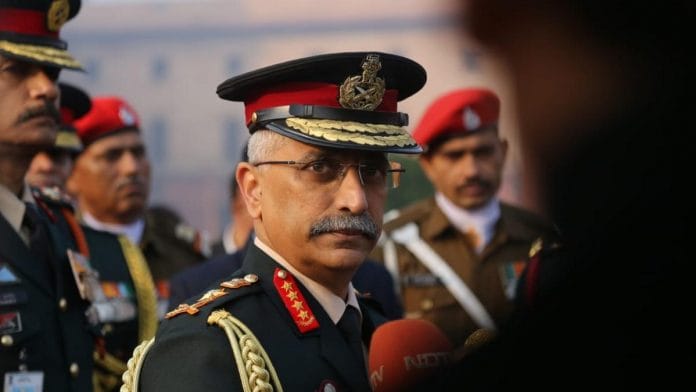New Delhi: The Army has bought ammunition worth over Rs 30,000 crore over the last three years to slowly fill a critical firepower shortage that was highlighted in the aftermath of the terrorist attack in Jammu and Kashmir’s Uri sector in 2016, ThePrint has learnt.
Two sources in the Army said the force has signed 39 contracts to procure ammunition for the guns and tanks in its inventory since the Uri attack and the subsequent surgical strikes.
Some of the big-ticket purchases include the Excalibur precision-guided shells for all its 150 mm guns, the Spike anti-tank missiles and fuses, the sources said.
There are more supplies in the pipeline under 24 other contracts, including 19 with foreign companies, according to reports.
In an interview to India Today on 28 January, Army chief General M.M. Naravane said the past shortages have been met, and the force’s ammunition reserves are full and stock levels high.
Speaking to ThePrint, a senior Army officer said that with the ongoing and other planned acquisitions, the Army is working towards reaching 40 (I) levels — needed to fight 40 days of “intense” war.
“However, the procurement will also have to be spread over a period of time so that the ammunition could be utilised,” said the officer who didn’t wish to be named.
Also read: Confident of getting a good grant from Modi govt’s Budget, says Army chief Naravane
Critical stocks
While the Army’s operational doctrine states it should maintain firepower to sustain 40 “days of intense war”, it was scaled down to 20 days of intense war after the 1999 Kargil conflict.
However, under former Army chief Gen Bipin Rawat’s tenure, the 20-day requirement was scaled down to 10 days of intense warfare, following an internal assessment.
In September 2019, Rawat had told ThePrint, “My focus was to build more reserves. We had an internal discussion and decided to focus on 10 I (10 days of intense war) along the western border. If we can’t win a war with Pakistan in 10 days, there is no point of a war.”
Just after the Uri attack, the Army realised that its ammunition stock at the time would not have lasted even 10 days. The shortage was adversely affecting the training of troops even as the Army was planning retaliation.
In 2017, a CAG report had highlighted that the stock of 61 types of ammunition — of the 152 types of ammunition deemed “critical” by the Army — is available for just 10 days of intense war.
The CAG reportedly said that only 31 were available for 40 days whereas as many as 12 types of ammunition were available for 30 to 40 days and 26 types were available for a little over 20 days.
Subsequently, the government gave powers to the Army vice-chief to make emergency purchases. “The emergency powers given to the Vice-Chief had gone a long way in ensuring this critical shortage is addressed,” said the officer quoted above.
Also read: Army will pull forces out of internal security duties in Northeast: Gen MM Naravane







Super policy off 10 I by army and Modi governments good decision to give power to the Army chief for emergency purchase. I had to mention Modi government here as any other person or government would be making deals themselves to make money more focused on making their balances more than stock up the armory.
Some times I wonder that – even our ammo and preparedness was below critical level. What earlier Govt have been doing in so many decades??? They had realy destroyed our defences and offensive capabilities…i really thank God that Modi/BJP Govt is here and at least are trying to make up some of the losses. Salute to our Brave Army
Its great that the Govt gave the Army Vice Chief the powers to make urgent purchases , which are being supplied now. But it looks as if there is a lack of adherence to goals and lack of alertness as well. Why did it take the Uri attacks to realise we had a shortage ? This should have been known to all senior planners in the Army well ahead.
Sixty years of lackadaisical attitude, corruption, enemy-blackmail and downright politics at the cost of defense have created structural issues that cannot be rectified in five years. But gradually each sector is being improved.
Jai Hind